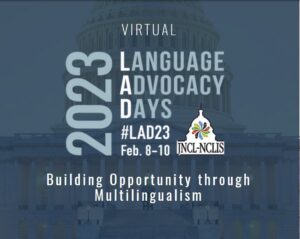 The World-Readiness Standards for Learning Languages define the central role of world languages in the learning career of every student. The five goal areas of the Standards establish an inextricable link between communication and culture, which is applied in making connections and comparisons and in using this competence to be part of local and global communities.
The World-Readiness Standards for Learning Languages define the central role of world languages in the learning career of every student. The five goal areas of the Standards establish an inextricable link between communication and culture, which is applied in making connections and comparisons and in using this competence to be part of local and global communities.
The World-Readiness Standards for Learning Languages create a roadmap to guide learners to develop competence to communicate effectively and interact with cultural competence to participate in multilingual communities at home and around the world.
With the help of a three-year grant from the US Department of Education and the National Endowment for the Humanities, an eleven-member task force, representing a variety of languages, levels of instruction, program models, and geographic regions, undertook the task of defining content standards — what students should know and be able to do — in language learning. The final document, Standards for Foreign Language Learning: Preparing for the 21st Century, first published in 1996, represents an unprecedented consensus among educators, business leaders, government, and the community on the definition and role of language instruction in American education. This visionary document has been used by teachers, administrators, and curriculum developers at both state and local levels to begin to improve language education in our nation’s schools.
Click here to read the entire article.


